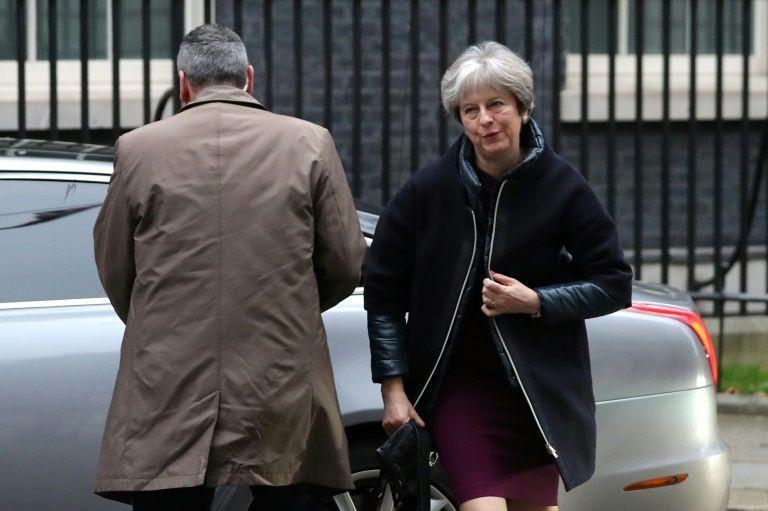May shakes up government in crunch year for Brexit
LONSON – Agence France-Presse

British Prime Minister Theresa May began a major shake-up of her ministers on Jan. 8 as she seeks to give fresh impetus to her government in a crucial year for the Brexit negotiations.
The most senior foreign, finance and Brexit ministers were expected to keep their jobs, but many others were expected to move in a reshuffle sparked by the sacking of May’s deputy last month.
Damian Green was the third minister to leave the cabinet in a space of weeks, after the defense secretary and international development minister both quit -- all three following separate scandals.
“The prime minister has started a refresh of her ministerial team,” said the official Downing Street Twitter feed.
The chairman of May’s Conservative party, Patrick McLoughlin, was the first to go, telling Sky News that his time in government had been a “great privilege.”
In a chaotic start, a new chairman was announced on Twitter -- only for the tweet to be almost immediately deleted. A different minister, Brandon Lewis, was then confirmed to the role.
McLoughlin had been widely tipped for the sack after last summer’s disastrous snap election, in which the Tories lost their parliamentary majority.
He also drew fire after a protester interrupted May’s speech to the party conference in October -- an address that was also marred by a coughing fit and a collapsing set.
It was one of several low points in a tough year for the prime minister, who took over the helm of a divided government and country in July 2016 after the EU referendum.
The cabinet reshuffle is being viewed as a chance at a fresh start, although it also brings risks of upsetting the delicate balance of euroskeptic and pro-European ministers.
May was reportedly set to create a new “no-deal” cabinet post with responsibility to prepare for a possible break-down in the talks with the European Union.
Britain is due to leave the bloc in March 2019, and although it has reached agreement on the key separation issues, the toughest talks on the future relationship have yet to begin.
Ahead of the reshuffle announcement, Northern Ireland secretary James Brokenshire revealed he was stepping down for health reasons.
He has failed to bring together feuding political parties in the British province, where the devolved government collapsed almost exactly one year ago.
Foreign Secretary Boris Johnson, a leading Brexit supporter, is expected to keep his job despite challenging the prime minister’s strategy last year.
Brexit minister David Davis is also like to remain, along with Finance Minister Philip Hammond and International Trade Minister Liam Fox.
After starting the two-year Brexit process in March last year, Britain struck a deal on the financial settlement, expatriate rights and the Irish border in December.
Negotiations on a transition deal to ease the break begin this month, while talks on a post-Brexit trade agreement between Britain and the EU are set to start in March.
However, many of May’s ministers disagree on the shape of the future relationship, and she has yet to make public what she wants beyond a “deep and special partnership.”
Jan. 8’s reshuffle was sparked by the need to replace Green, a close ally of the prime minister who was forced to quit last month over a pornography scandal.
“Damian Green’s departure before Christmas means that some changes do have to be made, and I will be making some changes,” May told the BBC on Jan. 7.
Reports suggest she will seek to bring a wider range of talent into the cabinet, including more women and ethnic minorities, and some younger rising stars.
May has said she intends to stay in office “as long as people want me to serve”, but last year saw numerous reports of plots to oust her -- and many ministers will have their eye on a future leadership challenge.
















